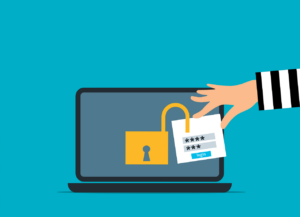Push-Bombing & How To Prevent It?

Hackers employ various methods to obtain these login credentials. Their objective is to gain access to business data while assuming the identity of a user. They also aim to launch sophisticated attacks and send insider phishing emails.
To what extent has the issue of account breaches escalated? Between 2019 and 2021, account takeover (ATO) experienced a 307% increase.
Doesn’t Multi-Factor Authentication Stop Credential Breaches?
Many organizations and individuals employ multi-factor authentication (MFA) to prevent attackers from utilizing their usernames and passwords. MFA has been effectively safeguarding cloud accounts for many years.
However, the effectiveness of MFA has motivated hackers to devise workarounds. One such malicious technique used to bypass MFA is push-bombing.
How Does Push-Bombing Work?
When a user activates MFA on an account, they typically receive a code or authorization prompt. The user inputs their login credentials, and then the system dispatches an authorization request to finalize their login.
The MFA code or approval request is usually delivered through a “push” message, which can be received in various ways:
- SMS/text
- Device popup
- App notification
Receiving such a notification is a regular aspect of the multi-factor authentication login process, something the user is familiar with.
With push-bombing, hackers initiate the attack using the user’s credentials, which they might have obtained through phishing or from a password dump resulting from a large-scale data breach.
These hackers exploit the push notification process by making multiple login attempts, resulting in the legitimate user receiving a sequence of consecutive push notifications.
Many individuals become suspicious upon receiving an unexpected code they didn’t request. However, when bombarded with numerous notifications, it becomes easier to accidentally click and approve access.
Push-bombing represents a form of social engineering attack with the following objectives:
- Confuse the user
- Wear the user down
- Deceive the user into approving the MFA request, granting the hacker access
Ways to Combat Push-Bombing at Your Organization
Educate Employees
Empowering users with knowledge is crucial. A push-bombing attack can cause disruption and confusion when experienced by a user. To enhance their preparedness and ability to defend themselves, it is essential to provide employees with education in advance.
Inform employees about push-bombing and its workings. Conduct training sessions to educate them on how to respond when they receive unsolicited MFA notifications.
Additionally, establish a reporting mechanism for such attacks within your organization. This enables your IT security team to promptly notify other users and take necessary measures to enhance the security of everyone’s login credentials.
Reduce Business App “Sprawl”
On average, employees log into 36 different cloud-based services each day, which requires managing a significant number of logins. The more logins an individual has to handle, the higher the risk of password theft.
Examine the number of applications utilized within your company and explore opportunities for consolidation to minimize app “sprawl.” Platforms such as Microsoft 365 and Google Workspace provide multiple tools accessible through a single login. Simplifying your cloud environment not only enhances security but also boosts productivity.
Adopt Phishing-Resistant MFA Solutions
By transitioning to an alternative form of MFA, you can effectively prevent push-bombing attacks. Phishing-resistant MFA implements authentication through a device passkey or physical security key.
With this authentication method, there is no need for push notifications requiring approval. Although this solution requires more intricate setup, it surpasses the security level offered by text or app-based MFA.
Enforce Strong Password Policies
In order for hackers to send multiple push notifications, they must possess the user’s login credentials. The likelihood of password breaches can be diminished by implementing robust password policies.
Strong password policies typically involve the following standard practices:
- Mandating the use of both upper and lower-case letters
- Requiring a combination of letters, numbers, and symbols
- Prohibiting the use of personal information when creating passwords
- Ensuring secure storage of passwords
- Discouraging the reuse of passwords across multiple accounts
Put in Place an Advanced Identity Management Solution
To prevent push-bombing attacks, you can utilize advanced identity management solutions. These solutions typically integrate all logins into a single sign-on solution. This means that users only need to manage one login and MFA prompt instead of dealing with multiple logins.
Moreover, businesses can employ identity management solutions to implement contextual login policies. These policies enhance security by offering access enforcement flexibility. For example, the system can automatically block login attempts originating from undesired geographic areas. It can also restrict logins during specific times or when other contextual factors are not met.
Why Is This Published By A Business Phone Company?
Here at NoContractVoIP, we believe that your success creates our success. And, since we specialize in business communication, we work to help you communicate better while staying safe. We create the cutting edge communication systems that modern companies need. And we geek out on tech stuff, so we study it for you.
To talk to a business phone system specialist and never worry about any of this again, call 866-550-0005 or contact us today.
To get the latest helpful content delivered to your inbox every month, subscribe to our newsletter here.
